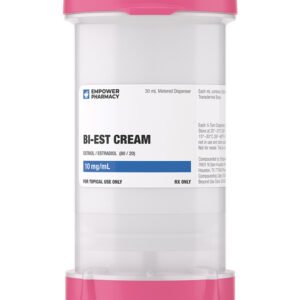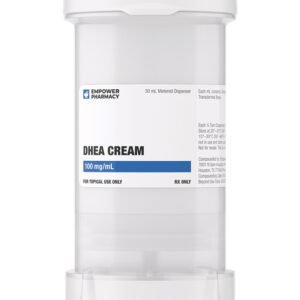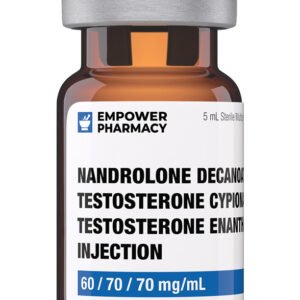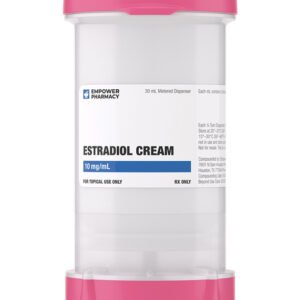NOTE: Many prasterone, dehydroepiandrosterone, DHEA preparations contain a variety of other ingredients, including minerals, vitamins, hormones and/or herbs, and each individual component may need to be evaluated for the presence of drug interactions. Only drug interactions pertaining to DHEA are discussed in this monograph.
Prasterone, dehydroepiandrosterone, DHEA is converted via hydrosteroid dehydrogenases and aromatase into androstenedione, testosterone, and estradiol by peripheral tissues. DHEA is a weak androgen that has complex hormonal effects. It is unclear what actions prasterone, dehydroepiandrosterone, DHEA would have on other exogenous hormonal regimens (e.g., androgens, estrogens, oral contraceptives, or progestins). Either additive or antagonistic effects could potentially occur. The mechanisms or results of interactions with DHEA and other hormones may be multifactorial and dependent on the sex and age of the individual being treated, the indication for hormone use, the route by which DHEA is given, and the length of concomitant use. Concurrent use of DHEA with any of these hormonal regimens is not recommended at this time.
Prasterone, dehydroepiandrosterone, DHEA is converted via hydrosteroid dehydrogenases and aromatase into androstenedione, testosterone, and estradiol by peripheral tissues. DHEA is a weak androgen that has complex hormonal effects. It is unclear what actions prasterone, dehydroepiandrosterone, DHEA would have on other exogenous hormonal regimens. It would seem prudent to not administer DHEA with infertility or hormonal cancer treatments such as GnRH analogs (cetrorelix, ganirelix, goserelin, histrelin, leuprolide, or triptorelin) since DHEA may theoretically interfere with these therapies.
Prasterone, dehydroepiandrosterone, DHEA is converted via hydrosteroid dehydrogenases and aromatase into androstenedione, testosterone, and estradiol by peripheral tissues. DHEA is a weak androgen that has complex hormonal effects. The action of 5-alpha reductase inhibitors (i.e., dutasteride, finasteride) could potentially be antagonized by DHEA administration. 5-alpha-reductase inhibitors have anti-androgenic effects on the prostate gland that may be antagonized by the androgenic effects of DHEA on these tissues. Avoid concurrent use.
Drug interactions with Saw palmetto, Serenoa repens have not been specifically studied or reported. Saw palmetto extracts appear to have antiandrogenic effects. The antiandrogenic effects of Saw palmetto, Serenoa repens would be expected to antagonize the actions of androgens; it would seem illogical for patients taking androgens to use this herbal supplement.
Corticosteroids blunt the adrenal secretion of endogenous DHEA and DHEAS, resulting in reduced DHEA and DHEAS serum concentrations. The impact of exogenous prasterone, dehydroepiandrosterone, DHEA administration on the safety or efficacy of chronic corticosteroid treatment regimens is not yet clear. The administration of DHEA to patients on corticosteroids should only be done under the observation of a qualified health care professional.
Prasterone, dehydroepiandrosterone, DHEA appears to have anti-platelet effects, which may prolong bleeding times. Inhibition of platelet aggregation by DHEA has been demonstrated in vivo in humans; the rate of arachidonate-stimulated platelet aggregation was prolonged or completely inhibited. In addition, DHEA is converted to androgens and estrogens within the human body and thus may affect hemostasis via androgenic or estrogenic effects. Estrogens increase the production of clotting factors VII, VIII, IX, and X. Androgens, such as testosterone, increase the synthesis of several anticoagulant and fibrinolytic proteins. Because of these potential, varied effects on coagulation, patients receiving DHEA concurrently with anticoagulants (e.g., warfarin or heparin) or other platelet inhibitors, including aspirin, ASA should be monitored for side effects or the need for dosage adjustments.
Concurrent use of antidiabetic agents with prasterone, dehydroepiandrosterone, DHEA is currently not warranted. The role of endogenous DHEA in relationship to insulin action or glucose intolerance is not clear. Endogenous levels of DHEA and DHEAS may be regulated by insulin and may not mediate insulin action. It is unclear what effect DHEA supplementation would have on glycemic control. Trials evaluating the effectiveness and safety of exogenous DHEA supplementation in combination with antidiabetic agents are currently unavailable.
Prasterone, dehydroepiandrosterone, DHEA is converted via hydrosteroid dehydrogenases and aromatase into androstenedione, testosterone, and estradiol by peripheral tissues. Prasterone or DHEA supplements should not be given concurrently with any aromatase inhibitors, as DHEA could interfere with the pharmacologic action of the aromatase inhibitor and compromise aromatase inhibitor effectiveness. Conversely, aromatase inhibitors (e.g., aminoglutethimide, anastrozole, exemestane, letrozole, testolactone, vorozole) could interfere with biotransformation of DHEA.
Prasterone, dehydroepiandrosterone, DHEA may inhibit the metabolism of triazolam, and other benzodiazepines (e.g., alprazolam, estazolam, midazolam) which undergo CYP3A4-mediated metabolism. In one study of elderly volunteers, half of the patients received DHEA 200 mg/day PO for 2 weeks, followed by a single dose of triazolam 0.25 mg. Triazolam clearance was reduced by close to 30% in the DHEA-pretreated patients vs. the control group; however, the effect of DHEA on CYP3A4 metabolism appeared to vary widely among subjects. While more study is needed, benzodiazepine-induced CNS sedation and other adverse effects might be increased in some individuals if DHEA is co-administered.
Prasterone, dehydroepiandrosterone, DHEA is a weak androgen that has complex hormonal effects. Androgens are known to stimulate erythropoiesis. Despite the fact that endogenous generation of erythropoietin is depressed in patients with chronic renal failure, other tissues besides the kidney can synthesize erythropoietin, albeit in small amounts. Concurrent administration of androgens can increase the patient’s response to epoetin alfa, reducing the amount required to treat anemia. Because adverse reactions have been associated with an abrupt increase in blood viscosity, this drug combination should be avoided, if possible. Further evaluation of this combination needs to be made.
In vitro, both genistein and daidzein inhibit 5 alpha-reductase isoenzyme II, resulting in decreased conversion of testosterone to the potent androgen 5-alpha-dihydrotestosterone (DHT) and a subsequent reduction in testosterone-dependent tissue proliferation. The action is similar to that of finasteride, but is thought to be less potent. Theoretically, because the soy isoflavones appear to inhibit type II 5-alpha-reductase, the soy isoflavones may counteract the activity of the androgens.






Reviews
There are no reviews yet.